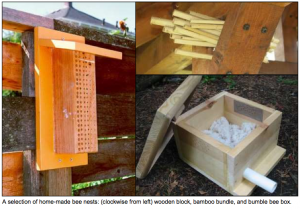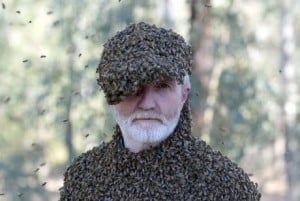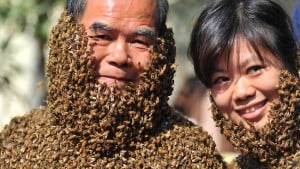Bees are a critically important insect to almost anyone who eats fruits, and EVERYONE who eats honey. So important in fact, that crop pollination by bees is responsible for over $15 billion in increased crop value in the USA each year. Recent years have seen a dramatic decline in honey bee populations largely due to the still poorly understood problem of Colony Collapse Disorder (CCD). While declining honey bee populations are certainly a very major cause for concern, it’s important that we don’t forget about the thousands of other bee species out there.
Wait what? Seriously? Doesn’t that seem a bit high?
Nope. North America is home to around 4000 different native species of bees. All the more reason to preserve our native biodiversity: native bees pollinate our crops too!
So if you like to eat any of these 90+ food crops or dozens of other useful plants, it’s probably pretty important to help out all these bees any way that you can. Thankfully, it’s not too difficult to do that. You don’t have to invest in the expensive and time-consuming hobby of keeping honey bees just to ensure that your garden crops are optimally pollinated and bees are still thriving.
Making nesting boxes and habitats for native bees is actually a very simple project. Take a look at these instructions from the Xerces Society for making several different types of native bee habitats.
At each of our community gardens around the area, we’re hoping to be able to install at least one type of native bee nesting habitat before the summer. Especially now that we’ve got plenty of raspberry bushes at each location (including 30 at the Nelsonville Community Garden and 50 at Union Furnace Elementary School in addition to what we planted last week!), having a nearby population of these helpful and industrious little pollinators should help boost the quality and quantity of produce coming from our gardens.
If anyone around the area would like to contribute any building materials for the native bee habitat projects, feel free to contact the Kevin Fletcher, the Regional Garden Specialist at Community Food Initiatives at kevin@communityfoodinitiatives.org
Untreated lumber is a must. Preferably wood that will stand up well to being out in the elements (white oak, cedar, locust, etc.). Sections of 6″x6″ or larger beams would be ideal, and a great way to repurpose wood from an old torn-down barn, for example.





This is very attention-grabbing, You’re a very skilled blogger. I’ve joined your feed and look ahead to in the hunt for more of your great post. Also, I’ve shared your website in my social networks!